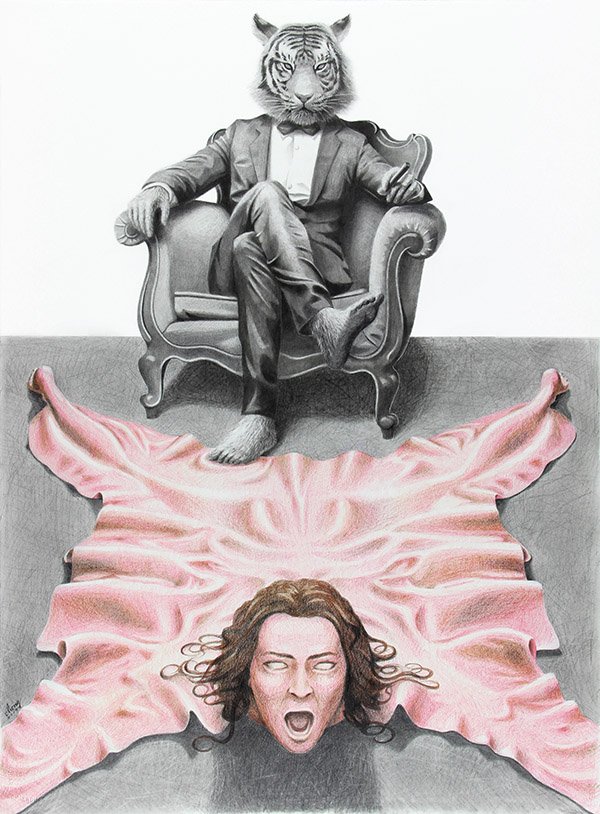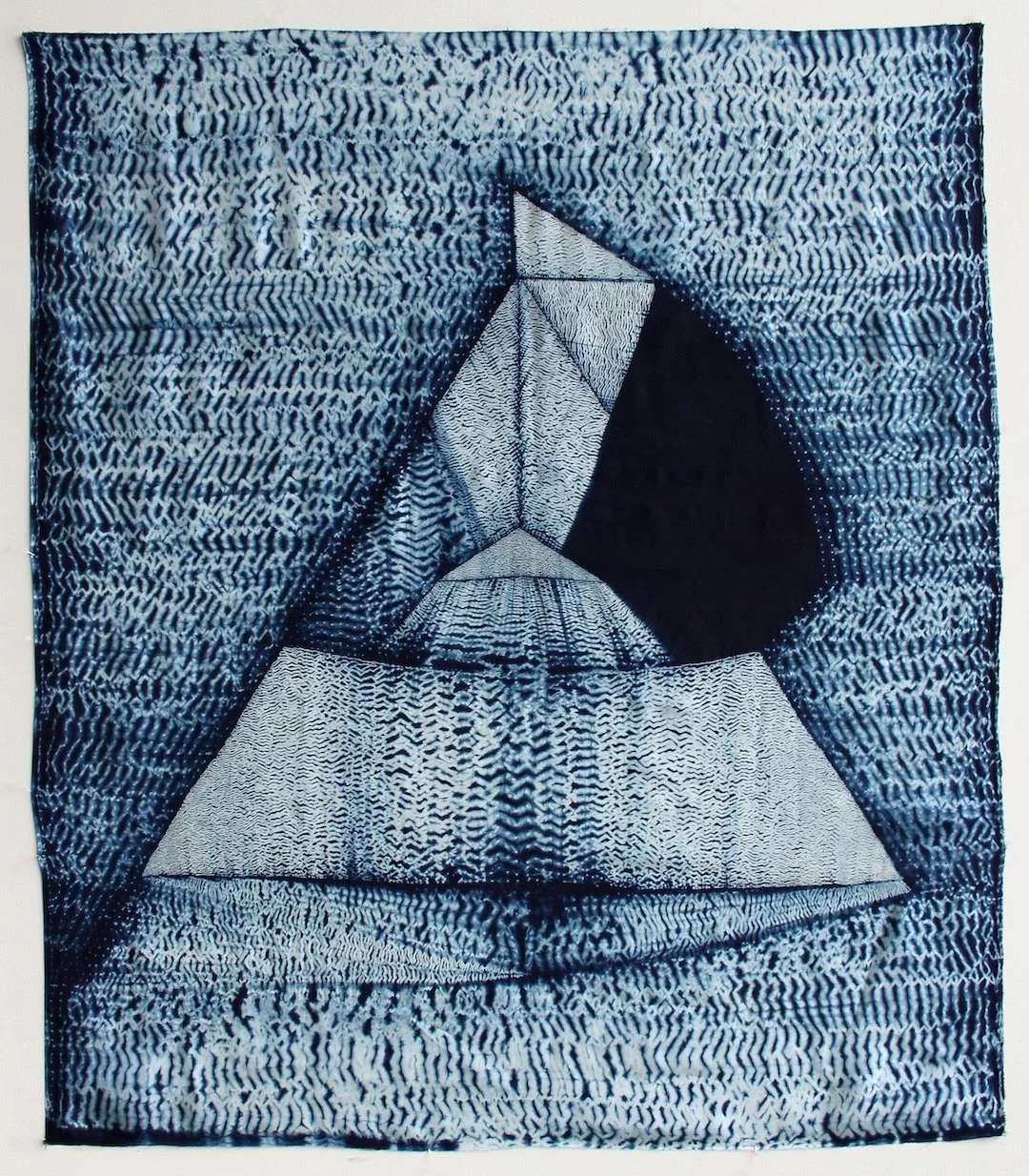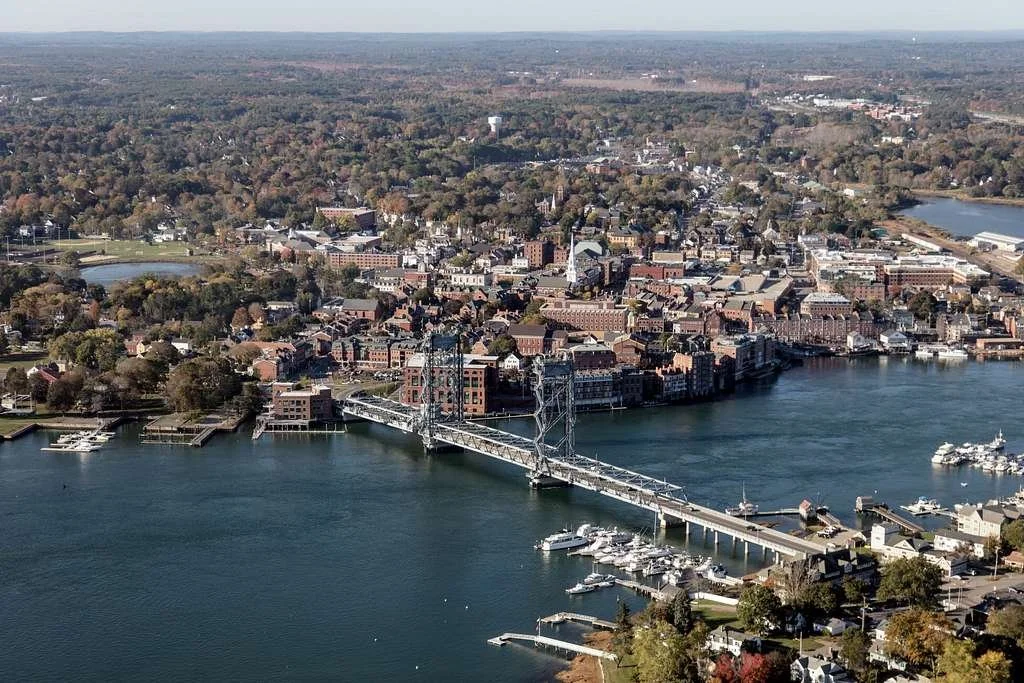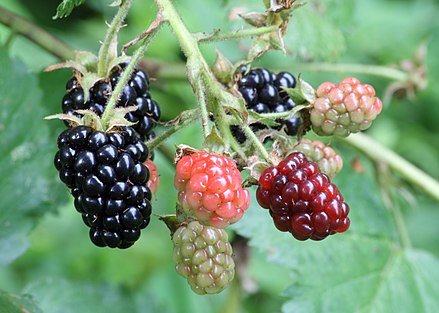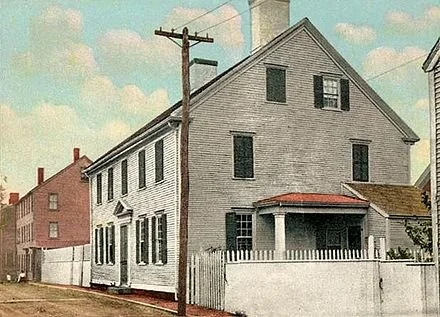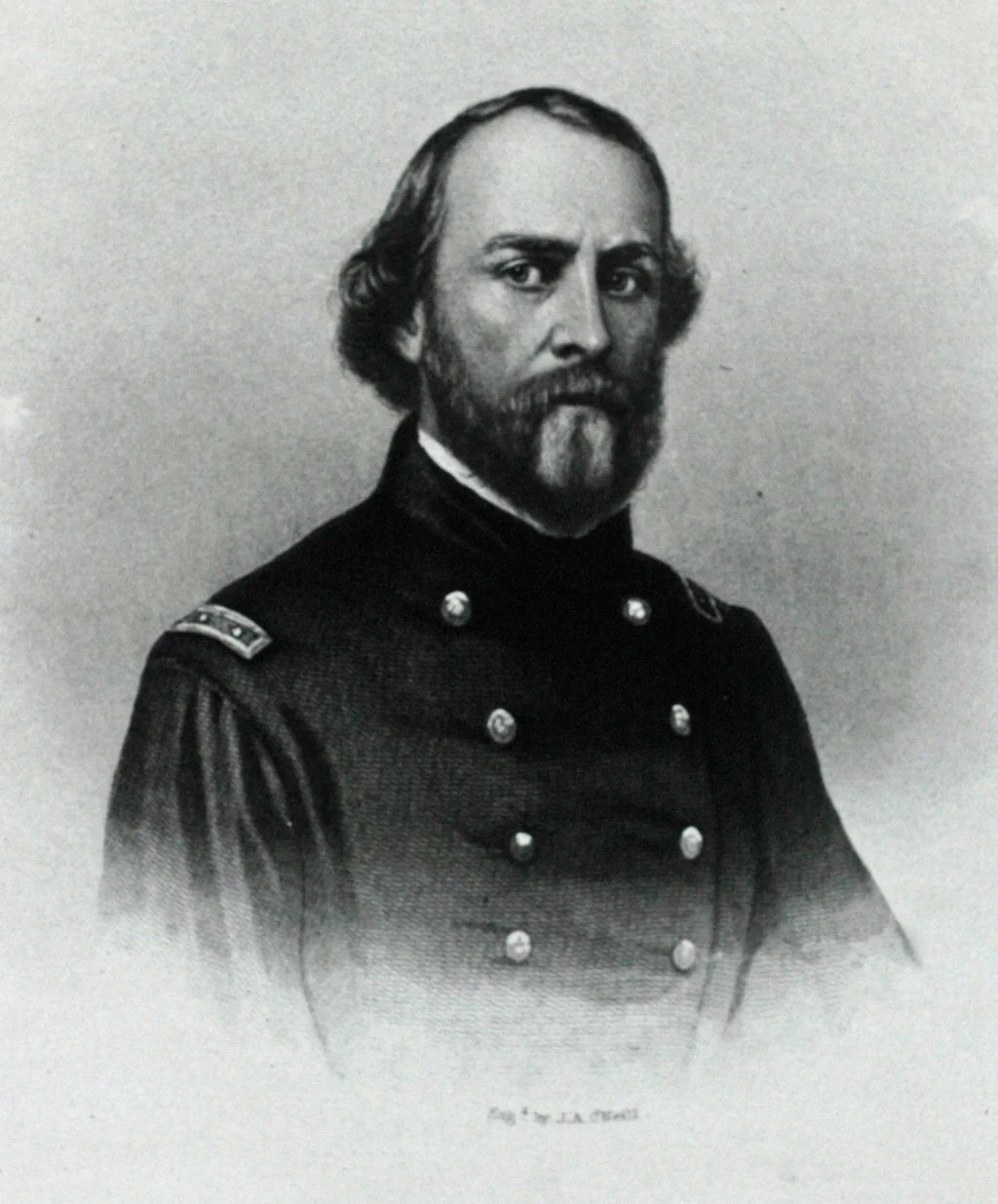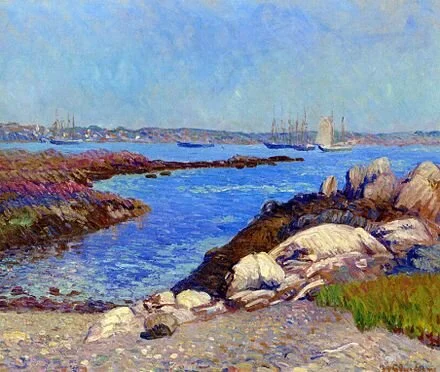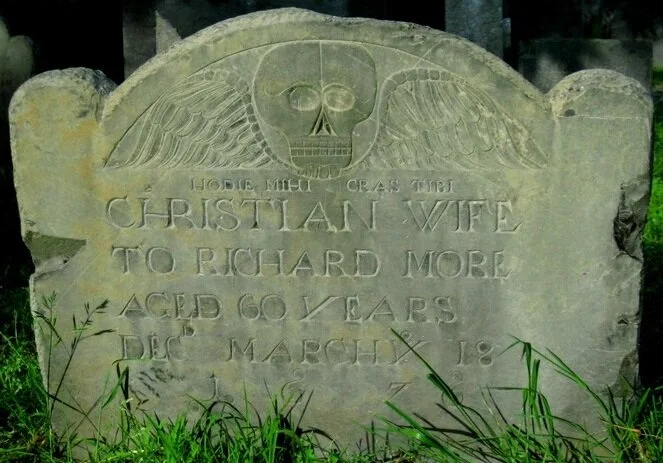
Role reversal
“Upscale Your Den and Live Fully” (graphite and colored pencil on paper), by Boston-based artist Sammy Chong, in his show, opening Nov. 24, “Be Beast,’’ at 3S Artspace, Portsmouth, N.H.,
The gallery says:
“In Sammy Chong’s surreal drawings of endangered species, anthropomorphized animals are empowered as the dominant species in a hierarchical, fictional reality. Shining light on animal extinction, the work reminds viewers about the impact of our habits and choices on the world and its creatures.’’
Intriguing indigo
Work by Davana Robedee in her show “As Above, So Below,’’ at 3S Artspace, Portsmouth, N.H., Sept. 8-Nov. 12
She says:
“Indigo dye is an intriguing substance. It strikes a balance between precise science and magical experience. Long before its scientific understanding, indigo was used all over the world for its color, but it was also revered for its magical transformation from green to blue in the dye process. Before knowing that on the molecular level, indigo was bonding with oxygen, it was described as ‘breathing’ as if it were a living entity. Through growing and dyeing with it, I find a place to hold both the spiritual and the scientific. Its place in my practice is symbolic and functional. The same is true for hand-stitched resist shibori as a method of making marks on fabric. It slows down my experience of time and the imagery references my parasomnia hallucinations. It gives rise to two narratives- that I slow down time and a create a magical transformation, or that I bind fabric and use a chemical reaction to create a pattern. Through this I question- are these arcane symbols from a world beyond consciousness, or simply a misfiring of the brain?’’
Portsmouth waterfront in 1917
We’ll settle for spring
“The Garden of Eden” (painting), by Massachusetts artist Eileen Ryan, at 3S Artspace, Portsmouth, N.H., March 22-April 16.
She tells the gallery:
“I have many ideas pulsing through me at once and I have found that they are visually represented in two distinct ways in my art. The first is an organized approach to exploring concepts and questions. In a methodical manner using a naturalistic aesthetic I hypothesize and create around my findings. The second is through painting, where color and form begin without a plan and the questions and concepts are revealed at the end of the painting. This process takes trust and often leads to discovering things about myself and my subconscious.
“Painting for me feels like diving into the unknown, with ideas and facets of my self glinting throughout and the full spectrum only being revealed in the end of the painting. It’s like I am searching for the questions in my paintings, and answering them in my installations.
“This series of paintings documents recurring dreams I have had since I was a child. The settings range from magical dreamscapes to nuclear nightmares often including idols from my Catholic upbringing and mythical characters from stories I grew up listening to. These narratives are about the balance of power, warnings from the deep, and mystics representing creative energy and greed.’’
Portsmouth, N.H.
Water rising and receding
This ceramic work is in Judy Pfaff’s current show, “smokkfishkur,” at the Museum of New Art (MONA), in Portsmouth, N.H.
The museum says:
“Judy Pfaff's painting in space takes a step further at MONA. Here are themes here of water rising and also receding, themes of the sea, ice, especially Icelandic—smokkfiskur, the Icelandic word for ‘squid,’ serves up mysteries that hint at submerged life counterbalanced by life made newly visible….
“Life beneath the surface is a long, evolving theme of Pfaff's. Here, for the first time, she includes new exploration of ceramics. Collapsed and twisted, these pots merge with sea life relics as exposed marine sedimentary layers similar to the palimpsest play in her printworks….
”Water is changing our world. Sea levels are rising; arctic lakes are vanishing. This upwelling of ancient history and covert creatures also stokes joy and curiosity. While the front gallery displays undersea emergence, the middle gallery invites emotional immersion served up and brightly lit with ingenious imagination. The rear gallery teases with secrets. Here, above sea level, there are hints of glaciers and things that float, bleached by the sun or frozen and preserved.’’
A great discovery
Ripe, ripening, and unripe blackberries
"It was then that I made one of the great
discoveries of my young and very sensual life:
blackberries aren't really black, they're
deep purple; and they make home-made ice cream
just about the sexiest thing a sun-burned kid
can put in his mouth this side of hot, ripe
peaches, purloined from a neighbor's tree.’’
— From “Blackberries,’’ by John-Michael Albert (born 1951), a Portsmouth, N.H.-based poet
—
Species of the battle for liberty
“The Stamp Act was to go into operation on the first day of November. On the previous morning, the 'New Hampshire Gazette' appeared with a deep black border and all the typographical emblems of affliction, for was not Liberty dead?’’
— Thomas Bailey Aldrich (1836-1907), American writer, including as poet and critic, and editor. The Portsmouth, N.H., native is notable, among other achievements, for his editorship of the Boston-based The Atlantic Monthly magazine.
Thomas Bailey Aldrich House, part of Strawberry Banke Museum, Portsmouth, N.H.
Sullivan Ballou
“I have no misgivings about, or lack of confidence in the cause in which I am engaged, and my courage does not halt or falter. I know how strongly American Civilization now leans on the triumph of the Government and how great a debt we owe to those who went before us through the blood and sufferings of the Revolution. And I am willing—perfectly willing—to lay down all my joys in this life, to help maintain this Government, and to pay that debt.’’
—Sullivan Ballou (1829-1861), Rhode Island lawyer, politician and major in the Union Army in a letter to his wife, Sarah, shortly before he died of wounds suffered in the First Battle of Bull Run.
Nature and abstraction
“Portsmouth (N.H.) Harbor Salt Pile’’ (archival silver gelatin print), by Carl Hyatt, a Portsmouth-based photographer, in the group show “Abstract Nature,’’ through April 24 at Cove Street Arts, Portland, Maine
The gallery explains that the show explores “the abstraction of nature through archival and digital prints. The exhibit title seems like a contradiction on the surface: abstraction is a manmade concept, thus nature on its own can't be abstract. However, abstraction as an art form elevates the essence of its subject by manipulating or removing parts of it.’’
Portsmouth Harbor, New Hampshire by William James Glackens (1909)
'Pages of the hillside'
Above and just below, in the Old Burying Point Cemetery, Salem, Mass. It was laid out in 1637.
—Photo by Max Anderson
“The graveyards of New England can be gay or sad, humorous or severe, bleak or beautiful, but they are are always intensely interesting. The spiritual history of our first two hundred years is nowhere written down more clearly than in these slate and granite pages of the hillside, these neglected Americana of the open air.’’
— Odell Shepard, in The Harvest of a Quiet Eye.
Point of Graves Burying Ground, Portsmouth, N.H. It was laid out in the 17th Century.
